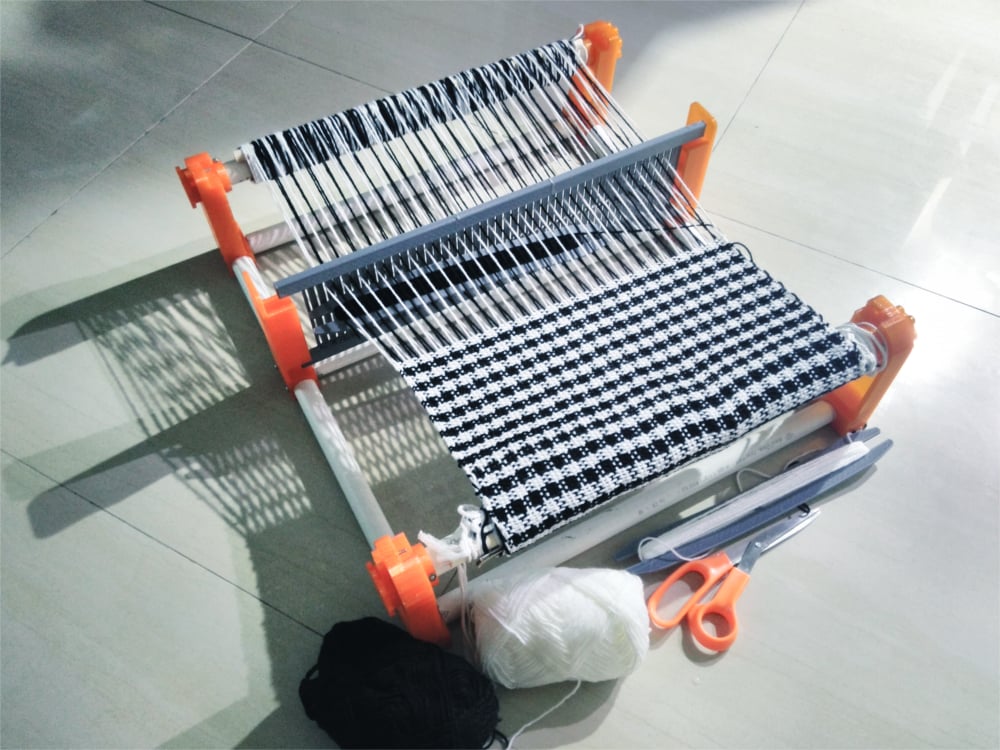
Rigid Heddle Loom
thingiverse
The frame has been engineered to minimize the number of cut PVC pipes while boosting strength and stability. Only two PVC pipes run lengthwise, and the warp beam supports and heddle supports have been reconfigured for the PVC to pass through them seamlessly. Four additional nuts and bolts are used to secure the heddle supports in place, adding even more stability. A diagram with precise dimensions has been included for reference. The following files are provided: Rigid Heddle Loom Parts; Stick Shuttle; Boat Shuttle (still in development); String Heddle Jig (utilizing two 5mm thick bamboo chopsticks, instructions available here: https://thelibrary.org/lochist/periodicals/bittersweet/su76g.htm). The SketchUp file is included, allowing users to view all the pieces and modify them if necessary. This fundamental rigid heddle loom design incorporates 22mm diameter PVC pipe and two 3mm x 12mm bolts along with accompanying hex nuts for the cogs and pawls. The heddle measures approximately 400mm wide. Users can find comprehensive resources on setting up and using rigid heddle looms here: https://www.ashford.co.nz/tutorials/weaving-tutorials. Assembling the heddle requires friction welding, a technique described in detail here: http://hackaday.com/2014/12/30/3d-printing-technique-friction-welding/. Hot glue is used to connect the printed parts with the PVC pipe. However, drilling a small hole through the PVC and the 3D printed parts where they interface and inserting a pin or length of metal rod works much better. This loom project is part of a larger initiative aiming to bridge the gap between highly industrialized textile production and localized hand-made production. Learn more here: http://www.progressth.org/2017/07/makers-taking-on-textiles.html
With this file you will be able to print Rigid Heddle Loom with your 3D printer. Click on the button and save the file on your computer to work, edit or customize your design. You can also find more 3D designs for printers on Rigid Heddle Loom .
